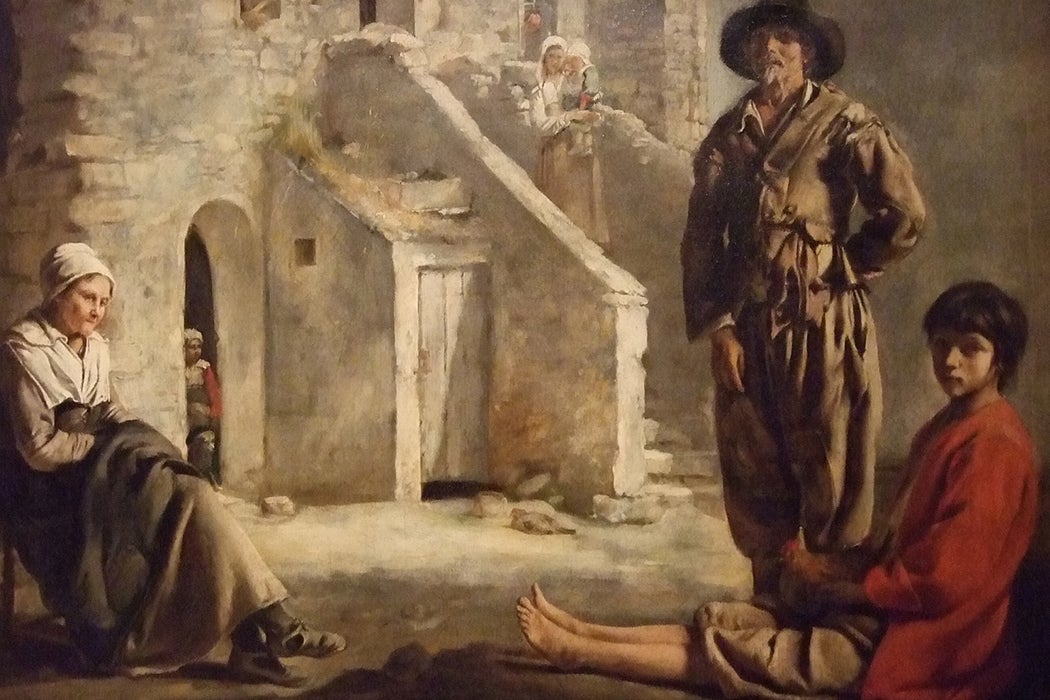The study of popular movements once concentrated on revolutionary eruptions. The political scientist James C. Scott writes that more “sophisticated views emphasizing social action, cultural history, intentional behavior, group formation, and various patterns of organization” have since superseded the old “volcanic” tradition. Scott himself is one of those who have led this move towards understanding what the French historian Marc Bloc called “patient, silent struggles stubbornly carried on.”
Such a perspective, notes Scott, can “transform lower-class actors into social and deliberating beings; they are no longer merely ciphers for incoming food and outgoing rents and taxes and/or emotional tripwires oscillating wildly between abject passivity and blind rage.”
Taking two case studies, of contemporary Malay and of historic French peasants attempting to avoid religious tithes, Scott explores the “ordinary weapons of relatively powerless groups.” This form of resistance has “no protest and requires little or no organization.” They also avoid “any direct symbolic confrontation with authority or with elite norms.” Nevertheless, Scott argues, they should be included in the larger view of social protest, widening the focus from “peaceful petitioning on the one hand and riots or guerrilla movements on the other.” There are a lot more hands on deck, and even more below.
The forms of resistance Scott elucidates include trickery, concealment, evasion, and fraud. Or, as he puts it, “foot-dragging, dissimulation, false compliance, pilfering, feigned ignorance, slander, arson, sabotage.” Unsurprisingly, such forms of resistance are not appreciated by the powers that be. Such resistance is often met by “countermeasures, threats, and prosecutions,” if not worse. Then the countermeasures are counter-countermeasured.
All of this takes place outside the political arena, at least by a “narrow definition of politics.” And yet, such responses to state power are not just the stubborn acts of individuals. “At one level such resistance is individual and self-interested. At another it is a unique species of collective action,” Scott writes. None of it would happen without a “generalized, often unspoken complicity.” A lone resister is easy to take down and be made an example of, but there is safety in numbers, in conspiracies of silence, in refusals to testify against one’s neighbors.
Weekly Newsletter
Intriguingly, Scott touches on the two-fold undermining of the Confederacy during the American Civil War. As many as 250,000 soldiers deserted the Confederate Army, or avoided conscription altogether, in what many of them called “a rich man’s war and a poor man’s fight.” At the same time, resistance by “shirking, insubordination, and flight” by the South’s enslaved population deprived the Confederacy of the food and revenue it needed. These duel mutinies were neither organized nor coordinated, but were pivotal in helping the Union to defeat the Confederacy. In their own way, they resulted in the ending of chattel slavery and the society based on it.
This is an extreme example. In general, the intention of quiet resistance is much subtler, merely “survival and persistence.” Scott summarizes:
Everyday resistance does not throw up the manifestos, demonstrations, or pitched battles that normally compel attention. It makes no headlines. But just as millions of anthrozoan polyps create, willy-nilly, a coral reef, so do thousands of individual acts of insubordination and evasion create a political and economic barrier reef of its own.
Support JSTOR Daily! Join our new membership program on Patreon today.







